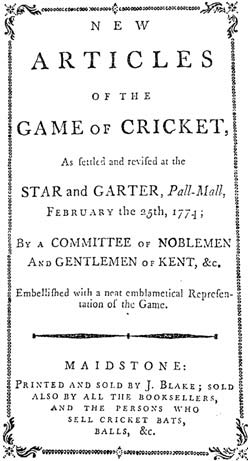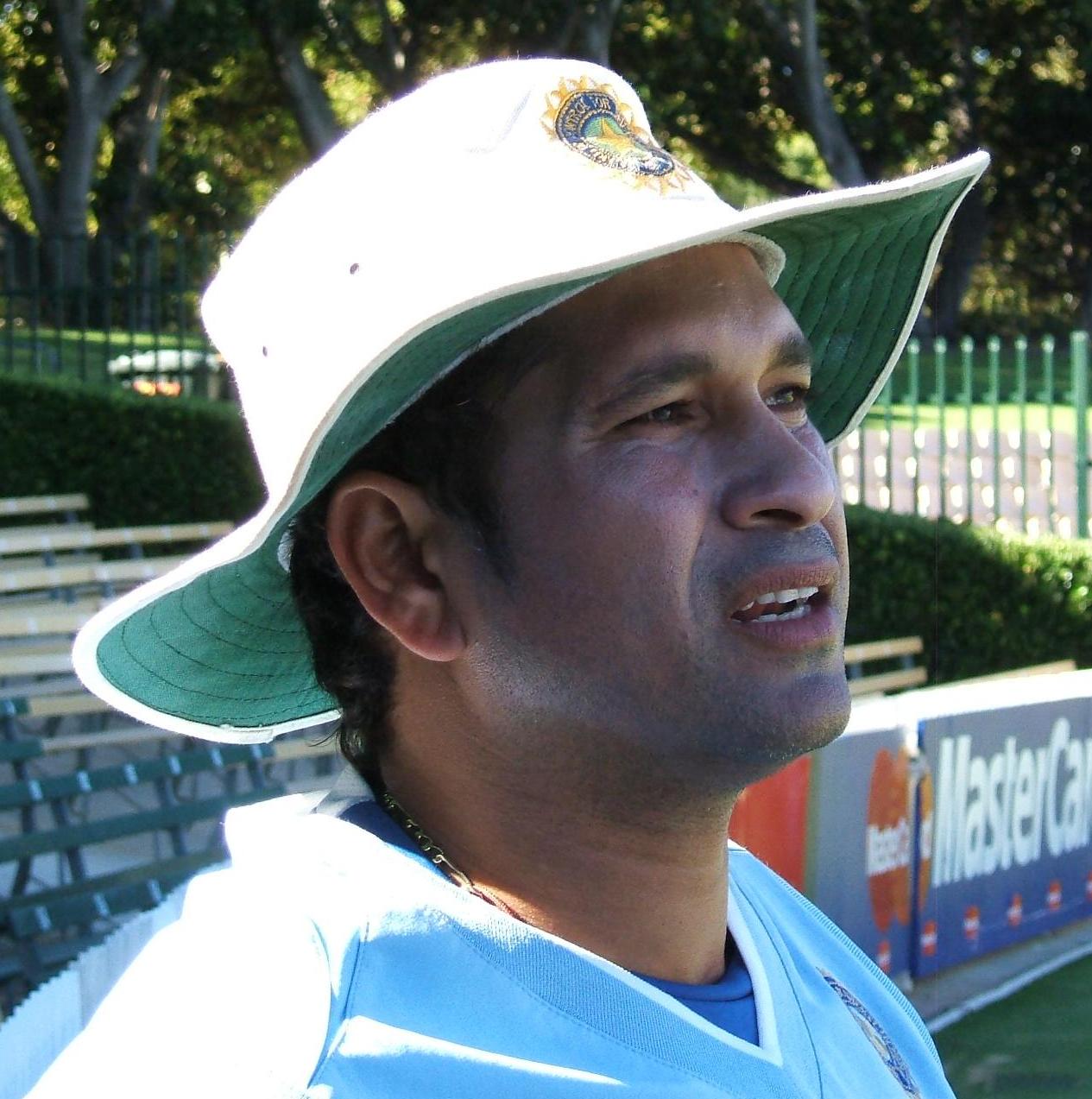|
Innings (cricket)
An innings is one of the divisions of a cricket match during which one team takes its turn to bat. Innings also means the period in which an individual player bats (acts as either striker or nonstriker). In cricket and rounders, "innings" is both singular and plural; this contrasts with baseball and softball in which the singular is "inning". Origin The earliest known record of the term concerns a match in August 1730 at Blackheath, Kent between a Kent side and London Cricket Club. The London-based ''St. James Evening Post'' reported: "'Twas thought that the Kentish champions would have lost their honours by being beat at one innings if time had permitted". Usage in cricket An innings is one of the divisions of a match during which one team takes its turn to bat, and is said to be "in to bat". Innings is the subject of Law 13 in the ''Laws of Cricket''. * In a first-class match, there are up to four innings, with each team due to bat twice (in practice, this is not alwa ... [...More Info...] [...Related Items...] OR: [Wikipedia] [Google] [Baidu] |
Cricket
Cricket is a Bat-and-ball games, bat-and-ball game played between two Sports team, teams of eleven players on a cricket field, field, at the centre of which is a cricket pitch, pitch with a wicket at each end, each comprising two Bail (cricket), bails (small sticks) balanced on three stump (cricket), stumps. Two players from the Batting (cricket), batting team, the striker and nonstriker, stand in front of either wicket holding Cricket bat, bats, while one player from the Fielding (cricket), fielding team, the bowler, Bowling (cricket), bowls the Cricket ball, ball toward the striker's wicket from the opposite end of the pitch. The striker's goal is to hit the bowled ball with the bat and then switch places with the nonstriker, with the batting team scoring one Run (cricket), run for each of these swaps. Runs are also scored when the ball reaches the Boundary (cricket), boundary of the field or when the ball is bowled Illegal delivery (cricket), illegally. The fielding tea ... [...More Info...] [...Related Items...] OR: [Wikipedia] [Google] [Baidu] |
First-class Cricket
First-class cricket, along with List A cricket and Twenty20 cricket, is one of the highest-standard forms of cricket. A first-class match is of three or more days scheduled duration between two sides of eleven players each and is officially adjudged to be worthy of the status by virtue of the standard of the competing teams. Matches must allow for the teams to play two innings each, although in practice a team might play only one innings or none at all. The etymology of "first-class cricket" is unknown, but the term was used loosely before it acquired official status in 1895, following a meeting of leading English clubs. At a meeting of the International Cricket Council, Imperial Cricket Conference (ICC) in 1947, it was formally defined on a global basis. A significant omission of the ICC ruling was any attempt to define first-class cricket retrospectively. That has left historians and statisticians with the problem of how to categorise earlier matches, especially those played in ... [...More Info...] [...Related Items...] OR: [Wikipedia] [Google] [Baidu] |
Cricket Terminology
This is a general glossary of the terminology used in the sport of cricket. Where words in a sentence are also defined elsewhere in this article, they appear in italics. Certain aspects of cricket terminology are explained in more detail in cricket statistics and the naming of fielding positions is explained at fielding (cricket). Cricket is known for its rich terminology.''Glossary of cricket terms''. England Cricket Board. Retrieved 13 May 2008."Cricket Academy – Glossary". |
Scoring (cricket)
In cricket, a scorer is someone appointed to record all runs scored, all wickets taken and, where appropriate, the number of overs bowled. In professional games, in compliance with Law 3 of the ''Laws of Cricket'', two scorers are appointed, most often one provided by each team. The scorers have no say in whether runs are scored, wickets taken or overs bowled. This is the job of the umpires on the field of play, who signal to the scorers in cases of ambiguity such as when runs are to be given as extras rather than credited to the batsmen, or when the batsman is to be awarded a boundary 4 or 6. So that the umpire knows that they have seen each signal, the scorers are required to immediately acknowledge it. While it is possible to keep score using a pencil and plain paper, scorers often use pre-printed scoring books, and these are commercially available in many different styles. Simple score books allow the recording of each batsman's runs, their scores and mode of dismissal ... [...More Info...] [...Related Items...] OR: [Wikipedia] [Google] [Baidu] |
Over (cricket)
In cricket, an over consists of six legal deliveries bowled from one end of a cricket pitch to the player batting at the other end, almost always by a single bowler. A maiden over is an over in which no runs are scored that count against the bowler (so leg byes and byes may be scored as they are not counted against the bowler). A wicket maiden is a maiden over in which a wicket is also taken. Similarly, double and triple wicket maidens are when two and three wickets are taken in a maiden over. After six deliveries the umpire calls 'over'; the fielding team switches ends, and a different bowler is selected to bowl from the opposite end. The captain of the fielding team decides which bowler will bowl any given over, and no bowler may bowl two overs in succession. Overview An over consists of six legal deliveries (although overs of different lengths have been used in the past, including four and eight). If the bowler bowls a wide or a no-ball, those deliveries are not coun ... [...More Info...] [...Related Items...] OR: [Wikipedia] [Google] [Baidu] |
Out (cricket)
In cricket, a dismissal occurs when a batter's innings is brought to an end by the opposing team. Other terms used are the batter being out, the batting side losing a wicket, and the fielding side (and often the bowler) taking a wicket. The ball becomes dead (meaning that no further runs can be scored off that delivery), and the dismissed batter must leave the field of play for the rest of their team's innings, to be replaced by a team-mate. A team's innings ends if ten of the eleven team members are dismissed. Players bat in pairs so, when only one batter remains who can be not out, it is not possible for the team to bat any longer. This is known as ''dismissing'' or ''bowling out'' the batting team, who are said to be '' all out''. The most common methods of dismissing a batter are (in descending order of frequency): caught, bowled, leg before wicket, run out, and stumped. Of these, the leg before wicket and stumped methods of dismissal can be seen as related to, or being ... [...More Info...] [...Related Items...] OR: [Wikipedia] [Google] [Baidu] |
End Of An Innings
In cricket, a team's innings ends in one of the following ways. In cases 1 and 2, the team are said to be ''all out'', because they do not have two players available to bat. # All but one of the batsmen are out. # The batting side only has one not-out batsman who is still able to bat (the others are incapacitated through injury, illness or absence; see retirement). # The team batting last scores the required number of runs to win. # The game runs out of time for either side to win, and so finishes as a draw. # The set number of overs (sets of 6 deliveries) have been bowled (in limited overs cricket). # The team's captain declares the innings closed. # The Match Referee decides that one team has forfeited the game. Law 13 covers the end of the innings. Taking wickets When the bowling team has dismissed all but one of the batsmen the innings is said to be over. The batting team is said to be 'all out' or 'bowled out'. For example, in most games, each side has 11 players, so ... [...More Info...] [...Related Items...] OR: [Wikipedia] [Google] [Baidu] |
Tie (cricket)
The result in a game of cricket may be a "win" for one of the two teams playing, or a "tie". In the case of a one-day cricket, limited overs game, the game can also end with "no result" if the game can't be finished on time (usually due to weather or bad light), and in other forms of cricket, a "draw" may be possible. Which of these results applies, and how the result is expressed, is governed by Law 16 of the laws of cricket. Win and loss The result of a match is a "win" when one side scores more run (cricket), runs than the opposing side and all the innings of the team that has fewer runs have been End of an innings, completed. The side scoring more runs has "won" the game, and the side scoring fewer has "lost". If the match ends without all the innings being completed, the result may be a draw or no result. Results where neither team wins Tie The result of a match is a "tie" when the scores are equal at the conclusion of play, but only if the side batting last has complete ... [...More Info...] [...Related Items...] OR: [Wikipedia] [Google] [Baidu] |
Super Over
Super Over, also known as a one-over eliminator or a one over per side eliminator, is a Tiebreaker, tie-breaking method used in Limited overs cricket, limited-overs cricket matches. If a match ends in a "Result (cricket)#Tie, tie", it proceeds to a Super Over, in which each team plays a single additional Over (cricket), over of six balls to determine the winner. The team scoring the most runs in that over is declared the winner. Following a rule change in October 2019 for knockout and bilateral series matches, if a Super Over ends in a tie, another Super Over is played. History A Super Over was first used in 2008 in Twenty20 cricket, replacing the bowl-out method previously used to break a tie. The Super Over was introduced into One Day International (ODI) cricket at the 2011 Cricket World Cup, but it was not required. For the 2015 Cricket World Cup, following World Cup, a Super Over would be used only to decide the final in the event of a tie. Ties in other knockout-stage mat ... [...More Info...] [...Related Items...] OR: [Wikipedia] [Google] [Baidu] |
Limited Overs Cricket
Limited overs cricket, also known as white ball cricket, is a version of the sport of cricket in which a match is generally completed within one day. There are a number of formats, including List A cricket (8-hour games), Twenty20 cricket (3-hour games), and 100-ball cricket (2.5 hours). The name reflects the rule that in the match each team bowls a set maximum number of Over (cricket), overs (sets of 6 legal Ball (cricket), balls), usually between 20 and 50, although T10 cricket, shorter and longer forms of limited overs cricket have been played. The concept contrasts with Test cricket, Test and first-class cricket, first-class matches, which can take up to five days to complete. One-day cricket is popular with spectators as it can encourage aggressive, risky, entertaining batting (cricket), batting, often results in cliffhanger endings, and ensures that a spectator can watch an entire match without committing to five days of continuous attendance. Structure Each team bats ... [...More Info...] [...Related Items...] OR: [Wikipedia] [Google] [Baidu] |
Laws Of Cricket
The ''Laws of Cricket'' is a code that specifies the rules of the game of cricket worldwide. The earliest known code was drafted in 1744. Since 1788, the code has been owned and maintained by the private Marylebone Cricket Club (MCC) in Lord's Cricket Ground, London. There are currently 42 Laws (always written with a capital "L"), which describe all aspects of how the game is to be played. MCC has re-coded the Laws six times, each with interim revisions that produce more than one edition. The most recent code, the seventh, was released in October 2017; its 3rd edition came into force on 1 October 2022. Formerly cricket's official governing body, the MCC has handed that role to the International Cricket Council (ICC). But MCC retains copyright of the Laws and remains the only body that may change them, although usually this is only done after close consultation with the ICC and other interested parties such as the Association of Cricket Umpires and Scorers. Cricket is one of th ... [...More Info...] [...Related Items...] OR: [Wikipedia] [Google] [Baidu] |
Batting (cricket)
In cricket, batting is the act or skill of hitting the cricket ball, ball with a cricket bat, bat to score runs (cricket), runs and prevent the dismissal (cricket), loss of one's wicket. Any player who is currently batting is, since September 2021, officially referred to as a batter regardless of whether batting is their particular area of expertise. Historically, ''batsman'' and ''batswoman'' were used, and these terms remain in widespread use. Batters have to adapt to various conditions when playing on different cricket pitches, especially in different countries; therefore, as well as having outstanding physical batting skills, top-level batters will have quick reflexes, excellent decision-making skills, and be good strategists. During an innings two members of the batting side are on the pitch at any time: the one facing the current delivery from the bowler is called the striker, while the other is the non-striker. When a batter is dismissal (cricket), out, they are replac ... [...More Info...] [...Related Items...] OR: [Wikipedia] [Google] [Baidu] |





